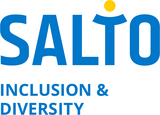Underpinning Principle: Participation
Some use the term consultation to describe participation but most participation practitioners consider consultation more a form of "listening" rather than a vehicle for genuine power sharing.
Consultation generally means asking or being asked for information or opinion and therefore there is an imbalance of power in that the individual seeking the information has control of both the agenda and the process.
Taking part in decision making processes can transform the way individuals think about themselves and their role or position in society. Participation empowers people to take control of their own lives both in the present and the future. But remember: no person is an island.
When thinking Participation think Intersectionality!
Depending on the individual's identities (age, race, gender, religion etc) participation levels can and will vary.
Roger A. Hart (1992) describes eight stages of young people's participation, with the lowest representing the least participation.
Levels of participation
- 8) Young person led, shared decisions with adults
- Young people initiate projects and decision-making is shared between young people and adults. These projects empower young people while at the same time enable them to access and learn from the life experience and expertise of adults.
- 7) Young person led and directed
- Young people initiate and direct a project. Adult role is motivator/mentor.
- 6) Adult led, decisions are shared with young people
- Adults initiate projects but the decision-making is shared with young people.
- 5) Consulted and informed
- Young people are consulted on adult initiated projects. The young people are informed about how their input will be used and the outcomes of the decisions made by adults.
- 4) Assigned and informed
- Young people are given a specific role and informed about how and why they are being involved.
- 3) Tokenism
- Young people appear to be given a voice, but in fact have little or no choice about what they do or how they participate.
- 2) Decoration
- Young people are used to strengthen a cause, although adults do not pretend that the cause is young person led.
- 1) Manipulation Adults use young people to strengthen a cause and pretend that the cause is young person led.
> Download this tool from www.salto-youth.net/find-a-tool/951.html
^^ top ^^
Exercise: Participation activity
EMPOWERMENT THROUGH PARTICIPATION
AIM
To aid the process of young ethnic minority women's self empowerment by exploring the concepts and potential positive outcomes of involving them in decision making processes.
OBJECTIVES
- To identify where, on the "ladder of participation", are the young ethnic minority women in your organisation
- To identify the challenges to full participation
- To identify examples of good practice that facilitates young ethnic minority women's participation
DURATION
1.5 hours
RESOURCES
Copies of "Participation - Key Concepts" and "Intersectionality".
METHODOLOGY
- Introduce the ladder of participation as a way of looking at different levels of young ethnic minority women's participation from "manipulated" (bottom of ladder) to "shared decision making" (top of the ladder). Distribute the "Key Concepts" handout.
- Divide the participants into small groups.
Ask the small groups to identify where on the ladder of participation they think young ethnic minority women within their organisation feature and why. What are the difficulties and barriers? How can they promote young ethnic minority women's full participation? - After the allocated time reconvene the full group and take feedback on where they think young ethnic minority women are on the ladder of participation.
- Ask the small groups to give feedback, to the full group, on their ideas on how to facilitate young ethnic minority women's participation and identify some examples of good practice.
Record these on the flipchart.
> Download this tool from www.salto-youth.net/find-a-tool/909.html
^^ top ^^

